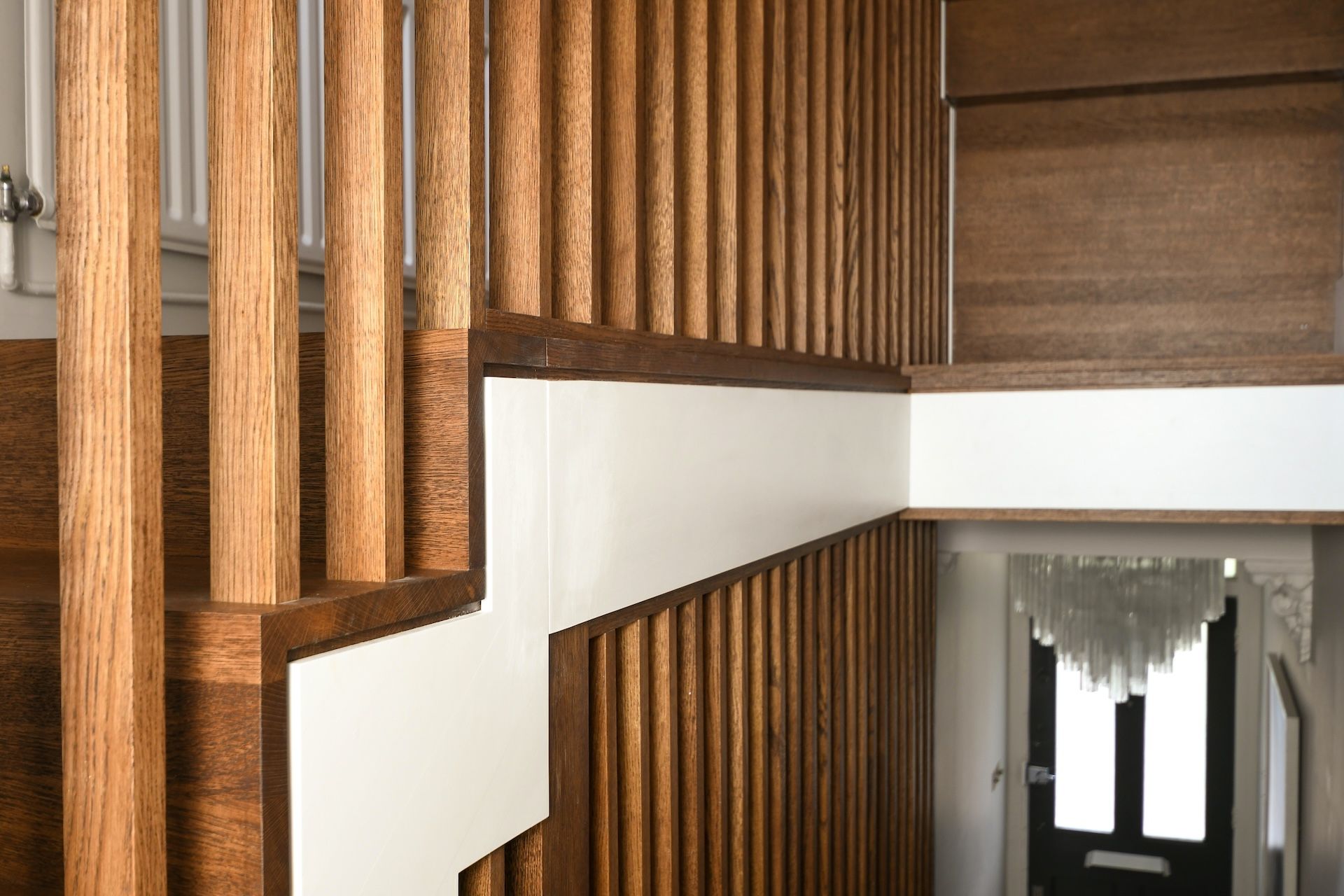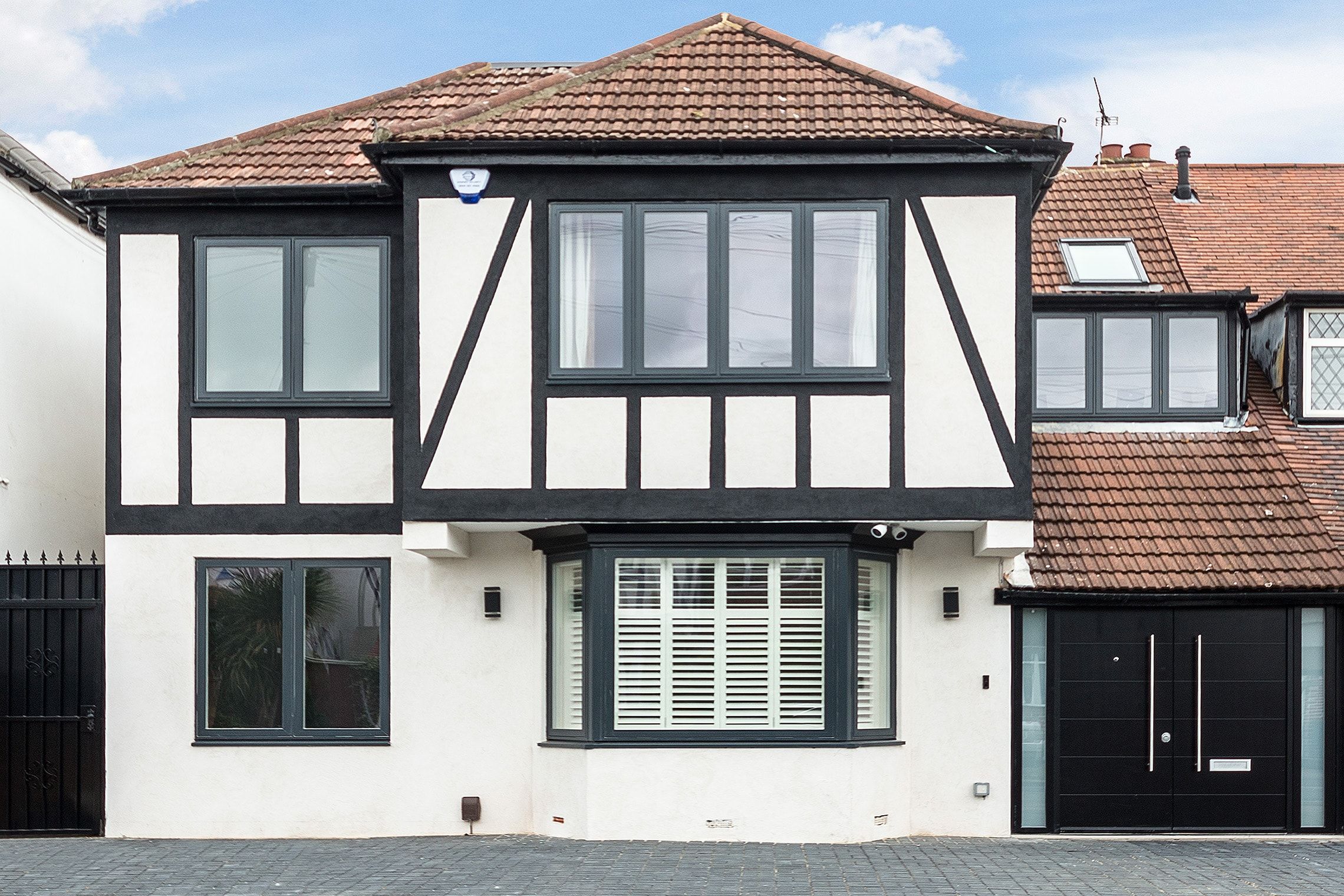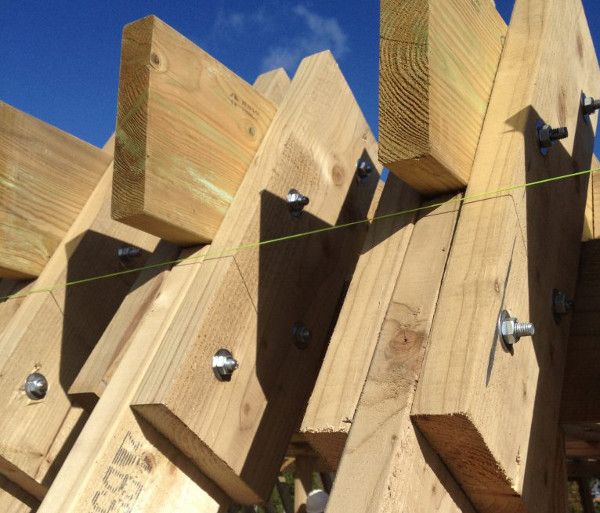Sustainable Construction Materials

Why use sustainable construction materials?
With topics such as 'environmental impact' and 'climate change' so prevalent in today's global conversation, there are few who need persuading when it comes to sustainability. We are all making small personal changes to reduce our carbon footprint on a day to day scale, from choosing to drive an electric car to using a bamboo toothbrush, and feel relatively reassured that we are making a positive contribution to a global issue. However, when it comes to undertaking project known to have a hugely negative impact on the planet, it is even more important to be making conscientious decisions.
By choosing to use sustainable building materials and environmentally friendly construction methods, we are making a long term commitment to:
- preserving the longevity of our planet and all its inhabitants
- protecting and preserving the ecosystem
- maintaining a cleaner environment through minimising waste and reducing carbon emissions
We also benefit on a personal level through:
- decreasing construction costs through the use of reclaimed, recycled, re-useable materials
- lowering maintenance and operational costs through employing more durable, long-lasting materials and more energy efficient systems
- having a clear conscience
With so many advantages to sustainable construction and building methods, there is little argument for the use of less green approaches and materials. houseUP is one of London's environmentally-focussed construction companies who are striving to reduce the industry's negative impact on the planet, and in particular the 10% of carbon dioxide emissions in the UK it is directly responsible for. By guiding renovation projects and offering advice, we can help you navigate your way through a greener build and to a more energy-efficient, future-proof property.
How sustainable are construction materials?
The Pantheon, The Great Pyramid of Giza and the Taj Mahal were all built using concrete, stone or masonry brick. The longevity of these famous structures make these building materials the three most popular throughout history and today.
However, today we ought to be considering not only their durability, but their embodied carbon.
- Concrete – used in large quantities for laying foundations, exterior surfaces and floors. The production of cement, one of the components of concrete, is an intense process with a high impact on the environment. Firstly, it's a large producer of CO2. Secondly, it also consumes large quantities of water- a 10th of the world's industrial water use. However, due to its lower embodied energy compared to some other materials, its long life and comparable energy-efficiency, concrete retains its popularity as a construction material.
- Steel – used for purposes such as structural frames, reinforcing foundations and cladding. As one of the most recyclable materials on the planet, steel is known for its sustainability. Some steel mills only use scrap to produce new steel and some even use the process gases to fuel other processes within the mill. This minimises waste and avoids importing natural gases from outside sources. Essentially, the reuse and recycling of steel is a fairly low impact process on the environment. It is also an energy-efficient insulator.
- Wood – used for the construction of walls, floors and ceilings, wall and door frames, interior decorating finishes and more. Well-managed, certified forests provide timber and ensure that deforestation concerns are reduced. Wood contributes positively to the environment due to its absorption of carbon dioxide while growing, and this, in some cases of fast-drying timber in particular, can mean than the production and transport emissions throughout its lifecycle can be offset. Furthermore, wood at its end-of-life can be easily reclaimed, repurposed and recycled.
- Stone – used in walls and flooring, damp proofing, interior decorating finishes. Natural stone such as sandstone, granite, slate, marble and basalt have been used for centuries and their durability is obvious. Partly due to its longevity and little need for replacing or repairs, stone has a lower carbon footprint than the other commonly used construction materials mentioned here. It is also low carbon emission at the point of quarrying, and choosing stone from local quarries further reduces impact. The downside to stone is that it's not a renewable resource.
- Brick – used for structural and decorative applications. While clay bricks come from a natural source, have a long life span, require little maintenance and can be easily reused or repurposed, the greatest environmental concern is in the manufacturing process. Involving large kilns to fire clay bricks, the carbon emissions associated with production are high. Bricks, however, are good insulators making them energy efficient.
More modern construction materials include: glass, plastic foam, aluminium. Main uses of glass are structurally, and for windows and doors. Two sustainability positives to using glass in construction are; the use of glass allowing in natural light contributes to energy-saving within the property, and secondly glass is recyclable. However, the production of glass has a negative environmental impact due to the use of fossil fuels, water pollution and CO2 emissions.
Plastic foam, or polyurethane foam, is used mostly for thermal and acoustic insulation and sealing gaps. The manufacturing of foam is relatively low impact on the environment, no combustible gases are produced and chemicals are stored safely. However, plastic foam does not degrade easily and is not commonly recycled, making a disposal issue.
Aluminium is considered a sustainable resources thanks to its natural abundance, energy-efficiency and high recyclability. It can be used structurally and non-structurally, for example in external façades, balustrades, roofs etc.
Alternative building materials
With approximately 50% of the planet's extracted raw materials being used for construction purposes and approximately 33% of the planet's waste coming from the same place, it is imperative that the industry take on more responsibility by responsibly sourcing, selecting and disposing of building materials.
It's a common myth that by choosing an alternative building material it means compromising on integrity or durability. Allow us to highlight some of the alternatives used currently, and some rising in popularity, and their comparative benefits.
Recycled building materials
- Steel is the most recycled material in the world. The UK recycles 80% of its scrap steel. When it's recycled it loses almost no intrinsic value. It can also be reused effectively, particularly if the original designers have considered future-proofing. It can be used in both the finished product and at building level. Some uses of re-used steel are for structural frames and piles. When using recycled steel as an alternative to virgin steel, the carbon footprint of a project is five times lower.
- Recycled or reclaimed wood has a lower environmental impact than harvesting new timber. It can be used at a construction level, i.e. supporting beams, and in finishes such as flooring, door and window frames.
- Producing 95% lower greenhouse gas emissions in the manufacturing of recycled plastic materials compared to concrete blocks, makes the reuse of plastic a more palatable option.
- Rubber can be recycled and used as a component for making a concrete that is lower in toxicity than traditional concrete mixes. It can be used as a type of soft flooring in some specific settings such as hospitals and play areas.
Natural building materials
- 100% natural and biodegradable, straw and sheep's wool are becoming more popular choices for insulation material. What's more, their high efficiency means lower energy bills.
- A highly renewable, resilient, moisture-resistant material, cork can be used to make panelling for ceilings, walls and floors. As it is sound-absorbing it is an ideal material choice for soundproofing.
- Clay brick, as an alternative to concrete brick, is more energy efficient. It will keep your home warmer in winter and cooler in summer. Clay bricks are both lighter in weight and stronger. They have a 650-year life span, and at their end-of-life they can be reused or returned to the earth easily.
- Hempcrete is made from hemp fibres bound with lime. Hemp itself is a fast-growing renewable resource that is growing in popularity for myriad uses. The lime component makes the Hempcrete material antibacterial and mould resistant, a great combination for regulating humidity and reducing damp.
Innovative materials
- AshCrete, a strong and durable substitute for concrete. Making use of another waste product, Fly Ash, means it's an environmentally friendly material on two counts; preventing waste and eliminating the CO2 emissions that would be caused during the production of traditional concrete.
- Mycelium, which comes from fungus, is a 100% natural, renewable and biodegradable building material. It can be used as a high-performance insulator, both thermal and acoustic, and as a non load-bearing brick.
- Potato chipboard is created from waste potato scraps. It can be used as an eco-friendly MDF alternative and at its end-of-life be composted to grow more potatoes.
Locally sourced building materials
The environmental impact of construction logistics is significant. In order to minimise shipping and the resulting carbon footprint, sourcing building materials locally could be a solution.
The benefits are; preventing unnecessary landfill, supporting the local trade and community, reducing costs of the project, decreasing the carbon emissions associated with shipping.
Some examples of sourcing locally are:
- salvaging or reclaiming materials from local sites, such as bricks, timber or tiles
- using homegrown timber or locally quarried stone
- sourcing finishes and furniture from UK-based designers
Construction methods and energy use
The first step towards making construction methods more environmentally friendly is considering a project's overall energy consumption and its emissions. By zeroing in on materials, we can make greener choices to better control one aspect of the project's carbon footprint. A sustainable material is one that has little or no negative environmental impact during the stages of its lifespan: sourcing, i.e. mining or extraction; production or processing; distribution; construction, including its durability and energy-efficiency in situ; and finally, disposal.
For example, take into consideration the sustainability of sheep wool as insulation versus fibreglass.
- Sourcing: Sheep wool is an all natural and renewable resource.
- Processing: It requires 15% less energy than fibreglass to produce.
- Distribution: Depending on availability, it might be possible to source sheep wool locally, thus minimising emissions associated with transportation.
- Durability: Sheep wool insulation can last a lifetime, whereas fibreglass needs to be replaced every 15-20 years.
- Energy efficiency: The density of sheep wool makes it a more efficient insulator, which has a positive impact on home energy bills.
- Disposal: Sheep wool is both biodegradable and recyclable, whereas fibreglass is neither.
When comparing the two materials, sheep wool is the more sustainable insulation choice.
Our commitment to sustainability in construction
At houseUP, we have more than 10 years' experience in the building and renovations industry so we are acutely aware of the enormity of its impact on the planet. For this reason, we are diligent in following industry innovators and the developments and recommendations made that support sustainability in construction. Through this guidance and expertise we will continue to make our own changes that support environmental safeguarding. What's more, as drivers for change, we actively raise awareness among our clients so that they can make more informed decisions and hopefully, greener choices.
A list of our ongoing initiatives to promote and support sustainability as a responsible construction company can be found here in the section titled 'Our initiatives'.
Gen is managing director and chief of digital strategy at houseUP. She has a background in information security and product management in tech startups.

